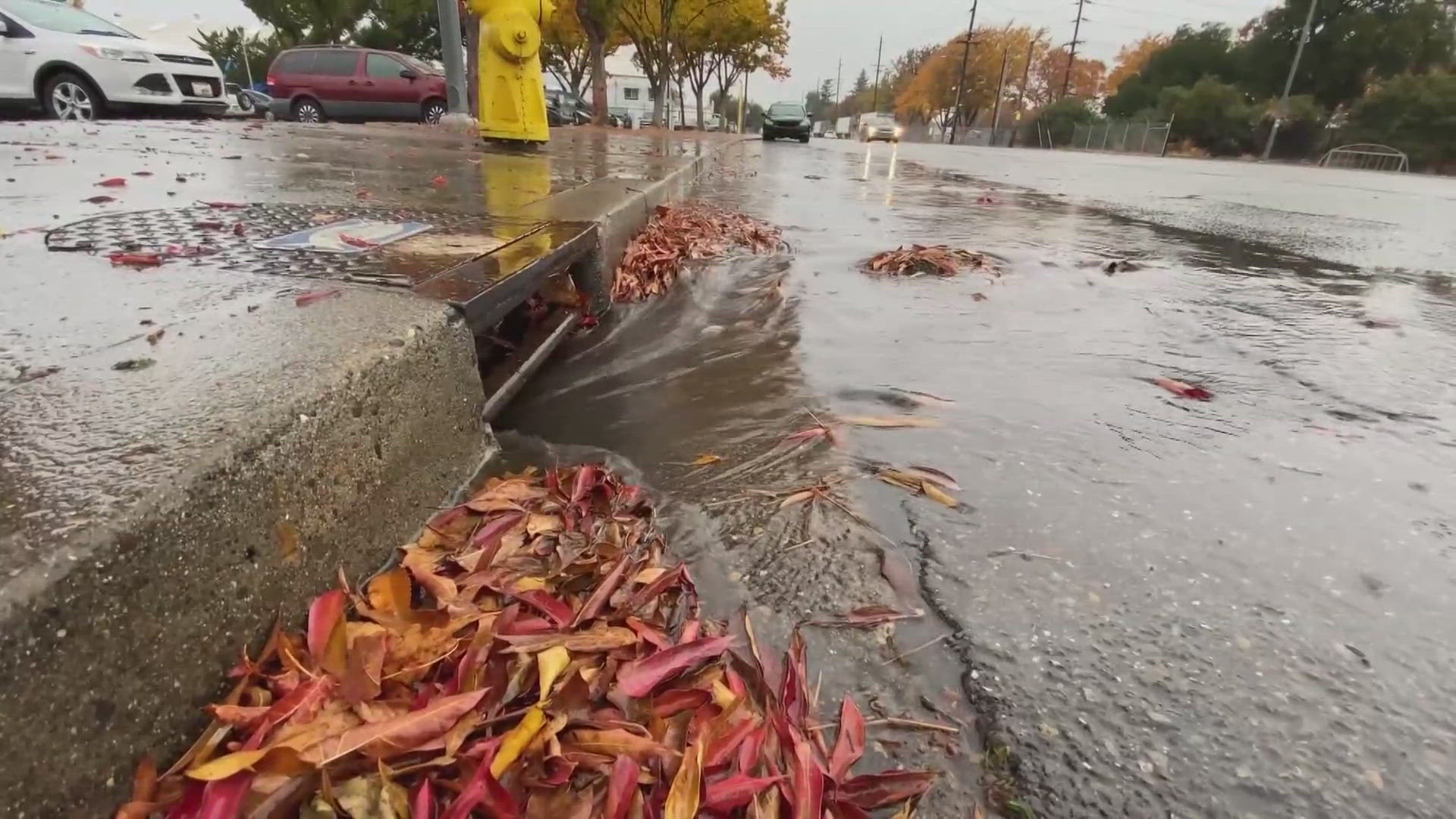CALIFORNIA, USA — This story was originally published by CalMatters.
Crime statistics are a loaded weapon.
They can be pointed in any direction, to mean anything: To law enforcement, rising crime usually means police departments need more officers, or that prison sentences aren’t high enough to deter crime. To criminal justice reform advocates, the same statistics might show that, in context, crime is down, and long-term legislative changes to the criminal code are working.
So how do we interpret California’s crime statistics? What does a spike in homicides in 2020 mean? Why did property crime go down in the first year of the pandemic? How many years of data do we need to create responsive policy?
The answer, according to those who study the issue – and aren’t running for office or stoking a political agenda — is: Don’t jump to conclusions.
For one thing, the way crime data is collected in California and across the country is inconsistent and doesn’t always provide a clear picture of how much crime is happening, who’s committing it and who is being victimized. Law enforcement agencies self-report their crime data to the FBI, which each year publishes the Uniform Crime Reporting Program. The California Department of Justice then produces statewide reports from those numbers.
But not every department reports its statistics. And among those that do, some don’t report all their data — or report the information differently. Some jurisdictions log every incident; others only report crimes that lead to incarceration.
Then there are the circumstances beyond the bounds of each jurisdiction. In the 2020 data, the first year of pandemic lockdowns, some police departments and sheriff’s offices across the state made fewer arrests for lower-level crimes. Fewer people were taken to jail, and a number of people incarcerated in jails and prisons were granted early releases.
Researchers are also wary of sweeping conclusions made about so-called spikes in homicides or other violent crimes, when long-range data may reveal far less alarming trends.
In all, the reporting of crime numbers is a snapshot of self-reported data, subject to human error and misinterpretation. It can also be deliberately manipulated, as claimed by whistleblowers at the New York and Los Angeles police departments.
“So long as police departments have any influence on reporting or recording crime, even independent, credentialed bodies will be unsuccessful in their effort to collect and publish accurate accounts,” wrote Emory College professor Carl Suddler in a Brookings Institution report.
It’s impossible to know what crimes were missed by police, or counted incorrectly. But from the available data, here is a snapshot of crime in California.
The homicide spike: The big picture
The headlines blared that homicides were up 31% in California in 2020. That’s true, but it doesn’t tell the whole story.
A long-range look at crime statistics, particularly homicide data, shows that the 2020 crime rate nationally and in California was still a fraction of its highs in the early 1990s, according to government statistics.
The jump between 2019 and 2020 became a central aspect of the unsuccessful recall of Gov. Gavin Newsom.
Republican Larry Elder, the leading vote-getter among Newsom’s challengers, decried the “soft-on-crime ethos that we see emanating from Sacramento and from many of our major cities.” Kevin Faulconer, another Newsom challenger, said the rising crime rate forced major employers to pull out of San Francisco.
In Kern County, the homicide rate per 100,000 people was 12.7 in 2020 — the state’s highest — or about one for every 8,000 people. Statewide, the average homicide rate was 5.5.
Some parts of California were able to suppress a spike in homicides. Monterey County’s homicide rate, once as high as 13.8 people per 100,000 in 2015, has dropped significantly, and in 2020 was lower than the statewide average at 3.2 per 100,000.
Someone she knows
In California, homicide victims and their relationship to their killers looks starkly different for women vs. men.
For homicides of women in which police could identify a suspect, 84% were friends, acquaintances, family members or relatives of the women killed. Spouses specifically were suspected in 12% of homicides in which women were victims.
Only 16% of suspects in the killings of women were strangers, according to the California Department of Justice.
That wasn’t true for men: More than 40% of suspects in the killings of men were strangers.
Gun deaths were dropping. Then, 2020
After three years of a decline, the number of homicides caused by firearms in 2020 hit its highest level in California in at least a decade.
Statewide, 1,606 people were killed by guns in the first year of pandemic lockdowns, the most recent year for which data is available.
It wasn’t just the number of people killed. A higher percentage of people were killed by firearms in 2020 than in any year since at least 2011.
Of those, nearly half were killed by a handgun. The number is almost certainly higher, since 23% of all firearm homicides reported by police did not specify or could not determine the type of firearm used.
Property crime and the pandemic
Perhaps it’s no surprise that property crimes dipped significantly during the first year of the pandemic amid curfews and lockdown orders. In fact, 2020 was a historically low year for property crime, according to statistics reported by police departments and sheriff’s offices to the California Department of Justice.
It also shouldn’t be a surprise that property crime returned to pre-pandemic levels in 2021 as restrictions eased.
According to a separate analysis by the Public Policy Institute of California that tabulated four major cities’ preliminary crime data, property crime in 2021 was up in Los Angeles, Oakland, San Diego and San Francisco between Jan. 1, 2020, and Oct. 31, 2021.
That followed a dip in which property crime in 2020 reached a six-decade low.
“While the specific factors driving fluctuations in crime numbers in the wake of the COVID health crisis are very difficult to determine, the data suggest that overall both violent and property crime are back to pre-pandemic levels,” the institute’s authors wrote.
Among California’s five largest counties – Los Angeles, San Diego, Orange, Riverside and San Bernardino — property crime fell slightly from 2015 to 2019, with a pandemic dip beginning in March 2020. The same trend held true for Alameda and Sacramento counties in Northern California.
A spate of smash-and-grab retail thefts in the Bay Area and Los Angeles in November and the burglarizing of Gov. Gavin Newsom’s own wine shop in San Francisco drew headlines. Newsom’s 2022 budget proposal included $300 million over three years to combat retail theft, most of it through grants to local law enforcement.
California hate crimes: Who’s being targeted?
Hate crimes were up in California in 2020, a year marked by lockdown orders but also a spate of nationally-reported incidents of anti-Asian bias.
In 2020, 1,530 hate crimes were reported in California. Of those, 1,030 were rooted in racial bias.
Nearly 70% of hate crimes reported as “closed” in 2020 were violent crimes. Of those, most were intimidation, simple assault or aggravated assault.
Of all hate crimes reported as “closed” in 2020, the majority — 67% — were directed against someone’s race, ethnicity or national origin.
And of those crimes committed against racial and ethnic groups, the highest number of victims per capita were Black and Jewish people.
Anti-Asian bias was the primary factor in 7% of those crimes. Asians make up 15% of Californians.
By contrast, anti-Black bias was the primary factor in 33% of all hate crimes in 2020. Black people make up just 6.5% of California’s population, according to 2021 estimates from the U.S. Census Bureau.
Among hate crimes directed at someone’s race or ethnicity, Black people made up 50% of victims.
According to the 2020 American Jewish Population Estimate from Brandeis University, 1.17 million Jewish people live in California. The same year, 120 anti-Jewish hate crimes were reported, according to the California Department of Justice.
Criminal complaints against police officers
Since 2016, California has been publishing the number of criminal complaints made against law enforcement officers by the public and how many were “sustained” – or deemed to be “true, by a preponderance of evidence.”
Before 2016, the Department of Justice only published statewide data without listing specific agencies.
Now, four years of data show which departments received the most complaints, and at what rate they sustained those complaints.
The data show that, since 2016, law enforcement agencies statewide sustained 7.6% of criminal complaints against their officers.
But there were wide variations. For instance, in 2017, the Department of Corrections sustained 22% of complaints against its officers — nearly triple the statewide average.
And in 2018, the Oakland Police Department also upheld criminal complaints against officers at a rate far outpacing the statewide average. The department has been under the supervision of an outside monitoring team and a federal judge since 2003, the result of a class action lawsuit settlement that accused Oakland police officers of beating residents and planting evidence.
In California, each department is its own fiefdom, with its own rules and procedures for adjudicating complaints.
Not surprisingly, the Los Angeles Police Department — one of the nation’s largest and the state’s most populous city — received the most complaints between 2016 and 2020. The department sustained those complaints at a rate of between 5% and 7%, which is below the statewide average.
How well are California cops clearing their cases?
Every year, most law enforcement agencies in California publish the results of their year: the number of crimes reported to them, and the number of arrests they made. With a little math, this becomes their “clearance rates.”
In 2020, the last year for which data is available, the total statewide clearance rate on non-fatal violent crimes was 45%, compared with 42% nationally. On homicides, clearance rates were 59% in California, compared with 54% nationally.
But clearances for homicide cases varied wildly — from more than four arrests per five homicides investigated by the San Diego Police Department, to fewer than one in five by the Kern County Sheriff’s Office.
The Los Angeles Sheriff’s Department made far more arrests per non-fatal violent incident than they did for homicides, driven primarily by higher arrests per rape and aggravated assault.
The opposite was true of the Oakland Police Department, which made more than one arrest for every two homicides, but fewer than one arrest for every three violent crimes.
There’s an important consideration to this data: The arrests are reported as “clearances,” but arrests are not convictions. A clearance doesn’t necessarily mean a crime was solved or anyone was punished.
Police also sometimes clear crimes by “exceptional means.” According to the FBI, this is when police have a suspect and enough evidence to make an arrest, but “a circumstance outside the control of law enforcement” stopped them – the suspect died, for instance, or the victim stopped cooperating.
When officers are injured or killed
From 2011 to 2020, California police officers were most likely to be injured or killed when they arrived at the scene in a vehicle and assisted a non-police agency, like firefighters.
During that period, 32 officers were killed “feloniously,” meaning their deaths were not accidental, according to California Department of Justice data.



